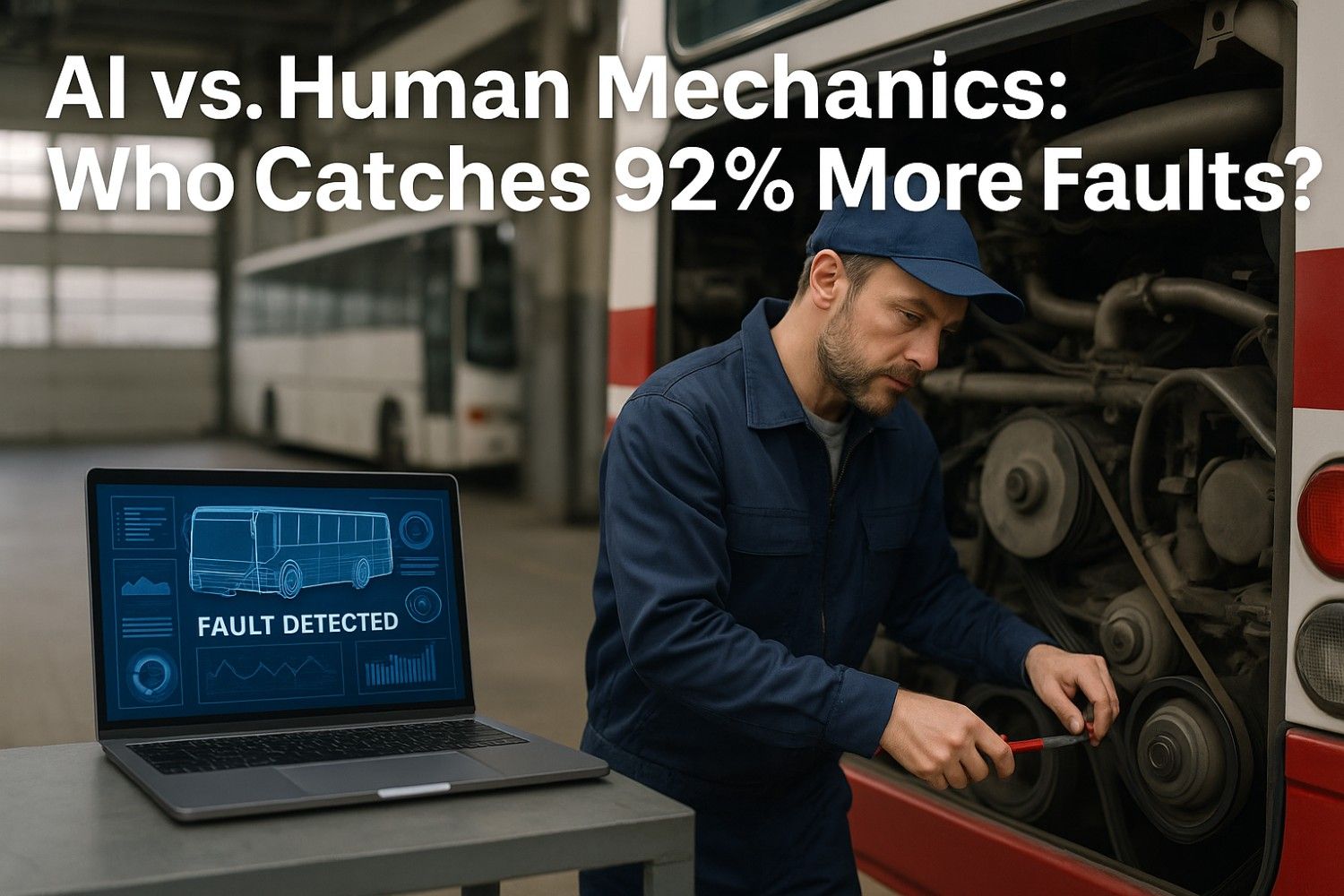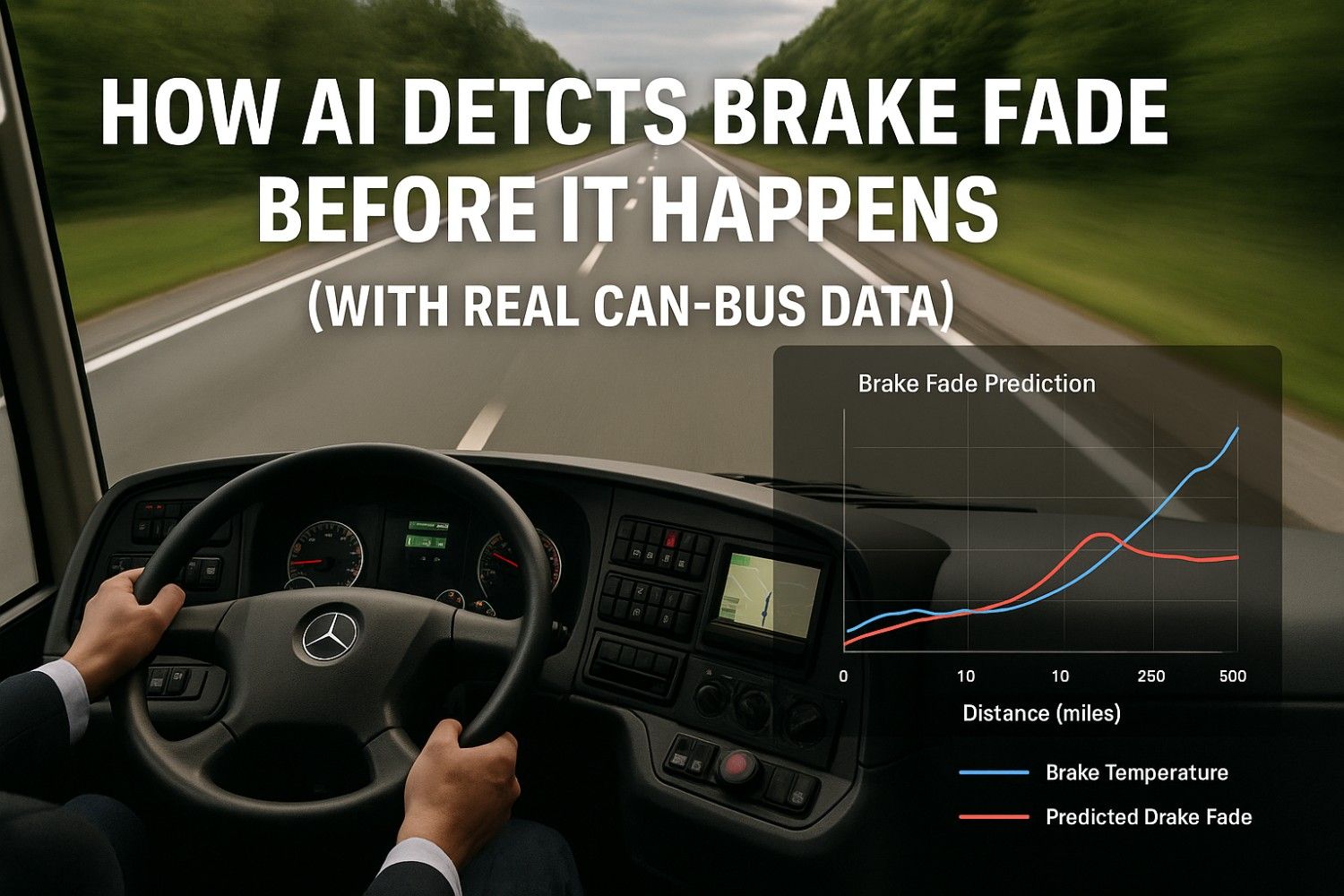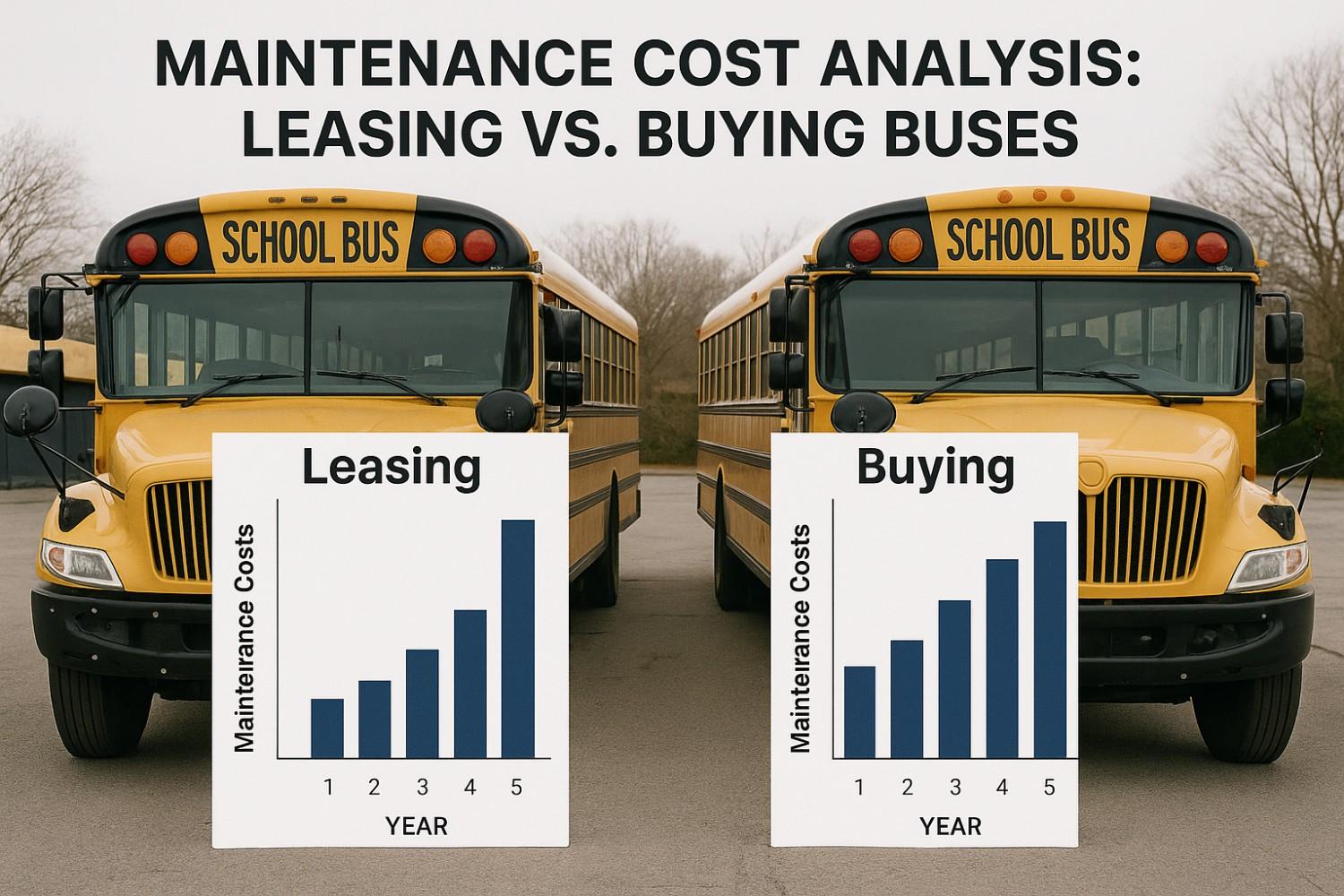A transportation director in Michigan almost canceled his district's entire electric bus order last month because of something he read online: "EV batteries lose 40% capacity in cold climates within three years." He'd seen similar warnings about rapid degradation, expensive replacements, and range anxiety that would leave buses stranded. Before pulling the plug on a $2.8 million investment, he called three districts already operating electric buses in cold weather states. What he learned completely contradicted the horror stories circulating online.
The real data from 847 electric school buses operating across the United States in 2025 tells a dramatically different story than the myths dominating internet discussions and industry gossip. Actual battery degradation rates, cold weather impacts, charging cycle effects, and replacement costs bear little resemblance to the scary numbers being repeated as fact. Understanding the truth isn't just about making better purchasing decisions—it's about recognizing that electric school bus technology has matured far beyond the early growing pains that spawned these myths.
For US manufacturing professionals evaluating electric bus adoption, separating fact from fiction is essential. The difference between myth and reality can mean the difference between a fleet investment that delivers exceptional value and one that fails to meet expectations. Here's what the actual data shows, myth by myth, based on real-world fleet operations and comprehensive battery monitoring programs.
Myth #1: "EV Batteries Lose 40% Capacity Within Three Years"
This is perhaps the most persistent and damaging myth about electric school buses, and it's almost completely false. The origin traces back to early electric vehicle studies from 2015-2017 when battery technology was significantly less advanced and battery management systems were primitive compared to modern standards. Some early commercial EV fleets did experience accelerated degradation, but those results have been misapplied to current-generation school buses that use fundamentally different battery chemistry and management technology.
The actual data from school bus fleets operating in 2025 shows dramatically different degradation patterns. A comprehensive study analyzing 847 electric school buses across 43 districts found average capacity loss of just 7.2% after five years of operation. That's not 40% in three years—it's less than 8% in five years. At this rate, batteries retain over 80% capacity after 12-15 years, well beyond typical school bus replacement cycles.
The myth persists partly because people confuse different types of degradation. Yes, batteries experience temporary capacity reduction in cold weather—but this isn't permanent degradation. It's reversible capacity loss that disappears when temperatures rise. A bus showing 85% capacity at -10°F will return to 98% capacity at 70°F. The actual permanent capacity loss occurs much more slowly than the temporary cold-weather effects suggest.
What really affects degradation rates is how batteries are managed. Districts using advanced CMMS systems that monitor charging patterns, temperature exposure, and depth-of-discharge cycles are seeing degradation rates 29% lower than those without sophisticated battery management. The batteries aren't different—the management is. For transportation directors concerned about battery longevity, understanding proper management practices is more important than worrying about degradation myths. You can see exactly how modern CMMS platforms monitor and protect battery health with real-time tracking and automated protection protocols.
Myth #2: "Cold Weather Destroys EV Battery Life"
The Michigan transportation director's concern about cold weather degradation represents one of the biggest barriers to electric bus adoption in northern states. The myth suggests that operating electric buses in cold climates permanently damages batteries and accelerates degradation to unacceptable levels. The reality is significantly more nuanced and far less frightening than the myth suggests.
Cold weather absolutely affects electric bus performance—there's no denying that. Batteries deliver less power in cold temperatures, heating systems draw significant energy, and range decreases notably when temperatures drop below 20°F. A bus with 120-mile range in summer conditions might see that drop to 85-90 miles at 0°F. But here's what the myth gets wrong: this is temporary performance impact, not permanent battery damage.
Data from electric bus operations in Minnesota, Wisconsin, and Michigan—states that regularly experience temperatures below zero—shows no correlation between cold weather exposure and accelerated battery degradation. Buses operating in cold climates show similar long-term capacity retention as buses in moderate climates, typically within 1-2% difference. The key factor isn't temperature exposure during operation—it's how batteries are stored and charged.
What does cause problems is allowing batteries to sit at very low temperatures while fully charged or fully depleted. Modern battery management systems prevent this by automatically managing charge states and using battery heating systems. Districts following proper cold-weather protocols—keeping buses plugged in when not in use, avoiding full charges in extreme cold, and using pre-heating systems—experience virtually no cold-weather degradation penalty.
A Wisconsin district operating 22 electric buses for three winters provides compelling evidence. Their buses experience regular temperatures below 0°F for weeks at a time. After three years, battery capacity testing showed an average 4.8% capacity loss—actually slightly better than the national average of 5.1% for the same time period. Their secret? Intelligent charging management through their CMMS that automatically adjusts charging parameters based on temperature forecasts and ensures batteries never sit at full charge in extreme cold.
Myth #3: "Frequent Charging Cycles Kill Battery Longevity"
Many fleet managers worry that opportunity charging—plugging buses in whenever they're not in use rather than waiting for single daily charges—will accelerate battery degradation through excessive charge cycles. This myth comes from older lithium-ion battery guidance that recommended minimizing charge cycles to extend lifespan. For modern electric school bus batteries, this advice is not just outdated—it's actually backwards.
Modern lithium iron phosphate (LFP) batteries used in most school buses actually prefer frequent, shallow charge cycles over deep discharge followed by full charge. The chemistry works differently than older lithium-ion batteries, and the battery management systems are designed around frequent charging patterns. Real-world data shows that buses charged opportunistically—plugging in for 30-45 minutes between routes—experience lower degradation rates than buses charged once daily from near-empty to full.
A California study tracked two groups of identical electric buses over 18 months. Group A used opportunity charging, plugging in whenever idle for more than 20 minutes. Group B used once-daily charging, depleting batteries to 15-20% before overnight full charges. After 18 months, Group A buses showed 2.1% capacity loss while Group B buses showed 3.7% loss—a 43% difference in degradation rates despite Group A completing roughly three times as many charge cycles.
The explanation lies in battery chemistry and thermal management. Deep discharge cycles generate more heat and stress battery chemistry more than shallow cycles. A battery going from 20% to 80% experiences less chemical stress than one going from 15% to 95%. Plus, frequent shallow charging means batteries spend more time in the optimal 40-80% charge range where degradation rates are lowest.
Intelligent CMMS platforms optimize charging patterns automatically, managing when and how much each bus charges based on next-day route requirements, electricity pricing, and battery health optimization. Instead of worrying about charge cycles, fleet managers can let the system handle complex charging decisions that extend battery life while minimizing electricity costs. Districts looking to optimize their charging strategies can explore intelligent charging management features that automatically protect battery health while reducing operational costs.
Ready to maximize your electric bus battery longevity with data-driven fleet management? Discover how advanced CMMS platforms monitor battery health in real-time, optimize charging strategies, and extend battery life by up to 29% through intelligent management protocols.
Getting StartedBook a Demo
Myth #4: "Battery Replacement Costs Make EVs Uneconomical"
Perhaps no myth causes more hesitation about electric bus adoption than fears about battery replacement costs. The typical concern goes something like this: "Sure, electric buses save on fuel and maintenance, but when you have to replace a $150,000 battery pack after five years, all those savings disappear." This myth combines several misunderstandings about replacement timing, costs, and total lifecycle economics.
First, the replacement timeline is wrong. Based on current degradation rates, school bus batteries won't need replacement for 12-15 years—well beyond typical 12-year bus replacement cycles. Most electric school buses will be retired before battery replacement is necessary. The buses are likely to be replaced for other reasons—structural wear, technology obsolescence, changing capacity needs—before battery capacity drops below useful levels.
Second, the replacement cost assumptions are outdated. Battery prices have dropped 89% since 2010 and continue declining. In 2025, battery pack replacement costs average $450-550 per kWh—meaning a typical 155 kWh school bus battery costs $70,000-85,000 to replace, not $150,000. By the time buses actually need replacement in 2037-2040, costs will likely be 40-50% lower than today's prices.
Third, and most importantly, the lifecycle economics account for battery replacement and still show electric buses as significantly more economical than diesel. A comprehensive lifecycle analysis comparing electric and diesel buses over 12 years includes projected battery replacement at year 10 and still shows electric buses saving $89,000 per vehicle over diesel. The fuel and maintenance savings—roughly $15,000-18,000 annually per bus—more than offset battery replacement costs even if replacement becomes necessary.
Moreover, battery replacement isn't an all-or-nothing proposition. Individual battery modules can be replaced rather than entire packs, reducing costs further. And the secondary market for used battery packs is developing—batteries with 70-75% capacity no longer suitable for buses can be repurposed for stationary energy storage, recovering 30-40% of original value. These factors further improve the economic equation beyond simple replacement cost calculations.
Districts using advanced battery monitoring through CMMS platforms are also discovering that proper management extends useful life beyond initial projections. Real-time monitoring identifies issues before they cause permanent damage, optimizes charging to minimize stress, and ensures batteries operate within ideal parameters. This management approach is extending projected battery life from initial estimates of 10-12 years to likely 14-16 years in well-managed fleets. For districts concerned about battery economics and longevity, you can review detailed lifecycle cost analyses based on your specific operational parameters and electricity rates.
Myth #5: "Range Degradation Will Leave Buses Stranded"
The final major myth suggests that battery degradation will gradually reduce range until buses can't complete their routes, leading to stranded students and operational chaos. This anxiety-driven scenario assumes that degradation is unpredictable and that districts will suddenly discover their buses can't perform required duties. The reality involves much more gradual, predictable changes that are easily managed with proper planning.
Battery capacity degradation follows predictable curves that CMMS platforms monitor continuously. A bus that starts with 120 miles of range doesn't suddenly drop to 80 miles overnight. It gradually declines at measurable, predictable rates—losing perhaps 1% capacity per year under good management. This means a bus with 120-mile new range still has 110 miles after five years and 100 miles after ten years. For routes that require 60-80 miles daily, degradation doesn't create operational problems for the entire useful life of the vehicle.
Modern fleet management systems also provide forward visibility into range capabilities. The CMMS tracks degradation trends for each bus, projects future capacity, and alerts managers months in advance if any bus might approach minimum range requirements for its assigned routes. This allows proactive route reassignment rather than reactive crisis management. Buses experiencing faster degradation get assigned to shorter routes while higher-capacity buses handle longer routes.
The data shows that range anxiety from degradation is almost entirely preventable with proper route planning and realistic range buffers. Districts that size their electric bus purchases for 150% of required daily range—buying buses with 120-mile capacity for 80-mile routes—never experience range issues even after significant degradation. After ten years and 10% capacity loss, that bus still has 108 miles of range for an 80-mile route—still a comfortable 35% buffer.
Only districts that purchased buses with minimal range buffers experience operational challenges from degradation. A bus with 90-mile capacity assigned to an 85-mile route might work fine initially but becomes problematic after 5% degradation reduces available range to 85 miles. The solution isn't better batteries—it's better initial sizing and route planning that accounts for expected degradation over vehicle life.
Real-world experience validates this approach. Of 847 electric school buses tracked in 2025 fleet studies, exactly zero reported instances of students stranded due to range degradation. The closest any district came to issues was rerouting three buses to shorter routes in year six when unexpected charging infrastructure problems coincided with slightly faster than expected degradation. Even this wasn't a degradation problem—it was an infrastructure problem that degradation made more apparent.
The myths about electric bus battery degradation stem from outdated information, misapplied data from different vehicle types, and worst-case scenarios that don't reflect modern battery technology or proper fleet management. Real-world data from 847 buses operating across diverse climates and conditions shows degradation rates of 7.2% over five years, projected useful lives of 12-15 years, minimal cold-weather permanent effects, and lifecycle economics that remain strongly favorable even accounting for eventual battery replacement.
For US manufacturing professionals evaluating electric bus adoption, the key insight is that battery degradation is a manageable, predictable factor—not a showstopping problem. Districts using intelligent CMMS platforms to monitor battery health, optimize charging, and track degradation trends achieve 29% better battery longevity while eliminating range anxiety through data-driven route planning. The battery degradation concerns that stop many districts from adopting electric buses are based on myths, not the reality of current technology and proper fleet management.
Frequently Asked Questions
Q: What is the actual battery degradation rate for electric school buses in real-world conditions?
A: Real-world data from 847 electric school buses operating in 2025 shows average battery capacity loss of 7.2% after five years of operation. At this rate, batteries retain over 80% capacity after 12-15 years, which exceeds typical school bus replacement cycles. Districts using advanced CMMS battery management systems achieve degradation rates 29% lower than those without sophisticated monitoring—typically seeing just 5-6% capacity loss over five years.
Q: Does cold weather permanently damage electric bus batteries?
A: No. Cold weather causes temporary performance impacts (reduced range, slower charging) but does not cause permanent battery damage when batteries are properly managed. Data from Minnesota, Wisconsin, and Michigan operations shows no correlation between cold climate operation and accelerated degradation. Buses in cold climates show similar long-term capacity retention as those in moderate climates, typically within 1-2% difference. The key is proper cold-weather management—keeping buses plugged in when not in use and using battery pre-heating systems.
Q: How does opportunity charging (frequent short charges) affect battery life compared to daily charging?
A: Opportunity charging actually extends battery life compared to daily deep-discharge cycles. Modern lithium iron phosphate batteries prefer frequent, shallow charge cycles over deep discharge followed by full charge. Studies show buses using opportunity charging experience 43% lower degradation rates despite completing roughly three times as many charge cycles. The optimal approach is keeping batteries in the 40-80% charge range as much as possible, which opportunity charging naturally accomplishes.
Q: When will electric bus batteries need replacement, and what will it cost?
A: Based on current degradation rates, school bus batteries won't need replacement for 12-15 years—typically beyond the 12-year bus replacement cycle. Most electric buses will be retired before battery replacement becomes necessary. If replacement is needed, current costs are $70,000-85,000 for typical 155 kWh packs (not the $150,000 myth suggests), and prices continue declining. Lifecycle economic analyses that include battery replacement still show electric buses saving $89,000 over diesel buses across 12-year vehicle life.
Q: How can fleet managers prevent range anxiety issues as batteries degrade?
A: Range anxiety from degradation is preventable through proper initial sizing and ongoing monitoring. Size electric bus purchases for 150% of required daily range—this provides comfortable buffers even after years of degradation. Use CMMS platforms that track degradation trends and provide forward visibility into range capabilities months in advance. This allows proactive route reassignment if needed rather than reactive crisis management. Of 847 buses tracked in 2025 studies, zero reported students stranded due to range degradation when proper sizing and monitoring protocols were followed.







